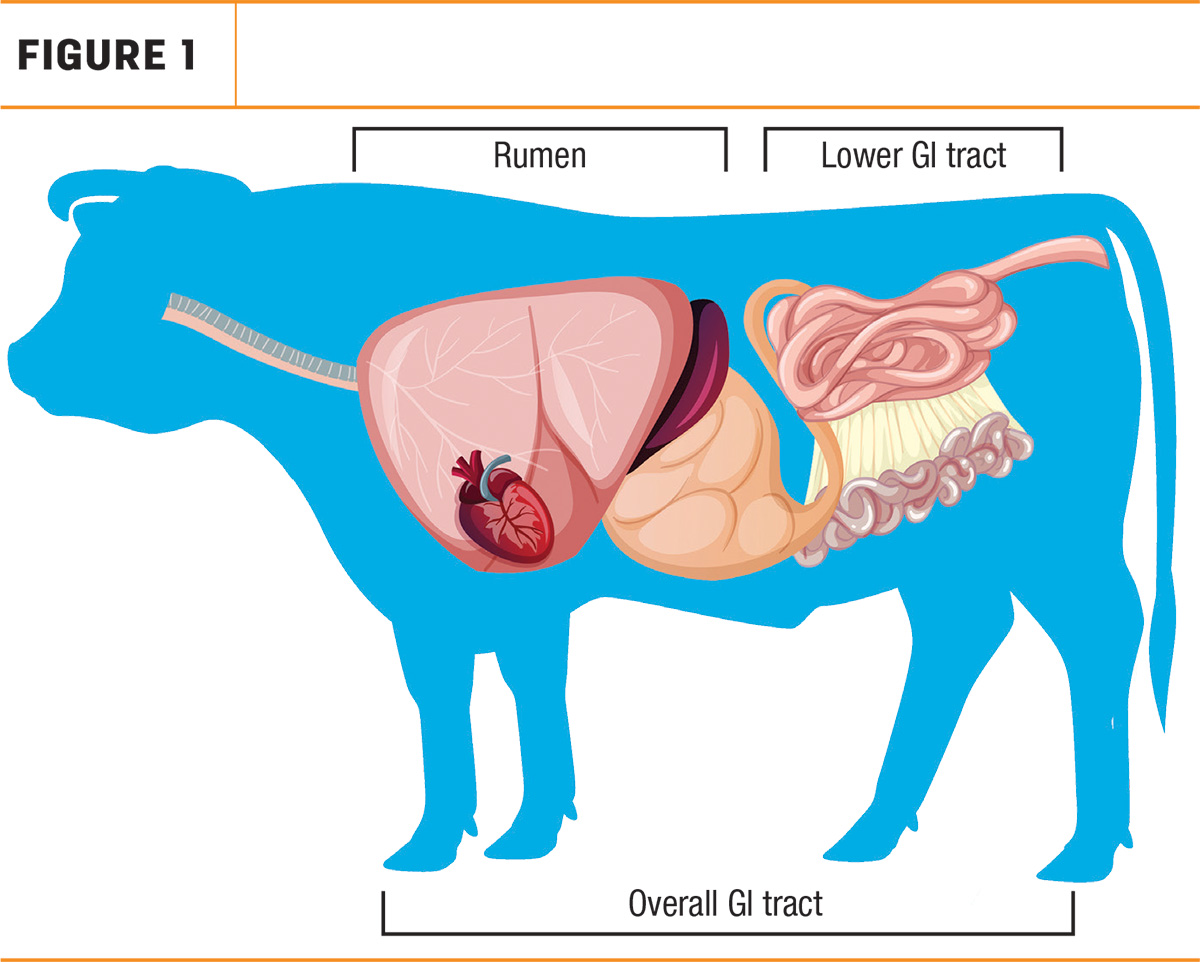As we progress through summer grazing of spring-calving cow-calf pairs and prepare for fall calving, fall run of preconditioned and high-risk calves, and the threat of increased pathogen loads (E. coli, clostridium, salmonella) in feedlot cattle, herd health and overall performance should be top of mind.
Calves will be weaned, commingled, often transported for several hours with some degree of feed and water restriction. They may pass through a sale barn or two and be commingled again at their next destination. Feedborne contaminants and anti-nutritional factors like pathogens and mycotoxins will be present every step of the way. Multiple stressors in a short amount of time can lead to off-feed situations, poor starts, higher risk for bacterial or viral infections, general lack of thriftiness and poor performance. What can be done to effectively prepare cattle to thrive through these various stressors?
Daily feeding of effective spore-forming bacteria (SFB; e.g., Bacillus subtilis, Bacillus licheniformis) as probiotics supports normal gastrointestinal functions – digestion, absorption, barrier and immune functions – and does so by interacting with feedstuffs, other microorganisms and the host. The beneficial modes of action of SFB occur throughout the entire digestive tract of ruminants – the rumen and beyond.
The rumen
Considerable research has addressed feeding and management practices to support optimum rumen activity and health in feedlot cattle. Consistent feeding regimens, adequate “effective” fiber in the ration and controlling the rumen ready-fermentable starch are key factors. Management factors that maintain a rumen pH above 5.5 usually result in optimum fiber digestion and microbial protein synthesis.
In contrast, low rumen pH can alter the rumen bacteria population, negatively impacting rumen health and digestion. One response to low rumen pH is increased flow of starch to the lower digestive tract and decreased dry matter digestibility, leading to undigested corn particles and long fiber in the manure, which are signs of poor rumen health.
In vitro data supports the notion that effective SFB, once animated to their vegetative state in vivo, should naturally produce a variety of beneficial enzymes. These enzymes include cellulase, esterase lipase and amylase that can enhance digestion and absorption of nutrients derived from complex feedstuffs. A cow on pasture grazing summer grass will cause the SFB to produce more fiber-digesting enzymes, while a feedlot steer on a finishing diet will see more starch-digesting enzymes produced by effective SFB.

Beyond the rumen: The lower GI tract
While over 1,000 diverse bacteria species are involved in rumen fermentation, rumen health and digestion are only part of the story. The lower digestive tract of cattle contains trillions of bacteria per gram of digesta flowing from the rumen, with a range of 400 to 500 different recognized bacteria species. The bacterial profile varies for each segment of the lower tract and is affected by the pH of the digesta flowing through the tract, rate of passage, gut immune system activity and diet.
Further enzymatic digestion occurs in the small intestine and microbial fermentation of carbohydrates in the large intestine. Feedlot research has demonstrated that 8% to 29% of total tract starch digestion takes place in the lower gut. So a healthy, normal lower gut is vital to overall digestive efficiency.
The small intestine is responsible for most of the lower gut digestion and absorption; however, the intestinal wall serves as a barrier keeping environmental pathogens such as E. coli, clostridium, salmonella, endotoxins and mycotoxins from entering the body proper. Bacteria in the intestine populate the mucosal barrier and compete with pathogens and mycotoxins. Effective SFB probiotics can prevent pathogens and mycotoxins from attaching to intestinal walls. These “good” bacteria compete with pathogens for nutrients and space (binding sites), produce antibacterial substances (bacteriocins), form biofilm and stimulate the production of specific antibodies and mucus.
The hindgut (large intestine and caecum) has digestion and absorption functions as well. Research has found that 5% to 15% of total tract organic matter digestion may take place in the hindgut. Bacteria in the hindgut further digest feed and rumen microbial products and add to total tract nutrient digestion. These bacteria produce volatile fatty acids (VFAs) and vitamins. These VFAs are absorbed across hindgut tissue, which is thinner than the rumen.
With poor starch digestion, an excess of highly fermentable carbohydrate in the large intestine can result in increased rumen concentration of gram-negative bacteria, which can produce endotoxins and elicit an inflammatory response in the wall of the large intestine. Endotoxin production can contribute to poor health (i.e., laminitis), mucin casts (sloughing of the mucus lining of the large intestine) and blood in the manure.
The most commonly used genus of probiotic SFB is bacillus. The fact that SFB form spores that can survive a variety of environmental stressors (pelleting temperature and pressure, extremes in pH, low water activity, etc.) makes them ideal probiotic candidates for a broad array of feed types (pellets, liquids, blocks, tubs, mineral and protein blends, etc.). Effective SFB probiotics can influence the environment of the lower gut and overall health. Enzyme production and pathogen mitigation are two of the primary functions of SFB probiotics in cattle. The goal of feeding an effective SFB is to improve the balance between the beneficial and pathogenic bacteria to improve nutrition and health of the host, leading to a greater percentage of normal cattle.
In summary, beef cattle nutritionists and feedlot managers should recognize the role that bacteria play in lower gut digestion, absorption, barrier and immune functions. Feeding strategies including the use of the right strains of effective SFB can improve the proper microbial balance in the lower gut and allow the “good bacteria” to dominate the “bad bacteria.” The greater the percentage of healthy, normal cattle at any given time, the greater the likelihood of economic success.









